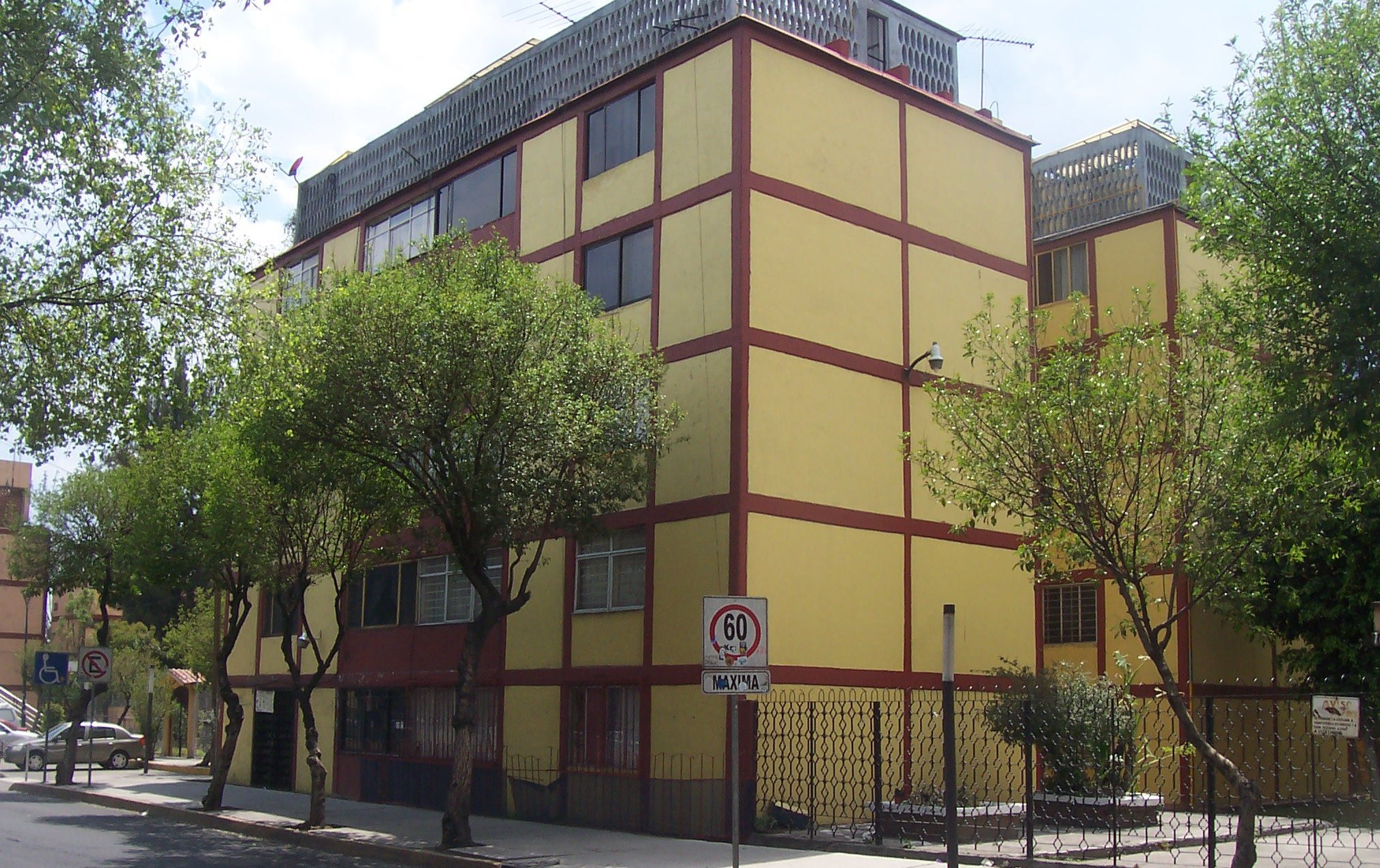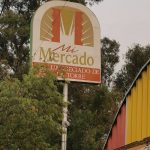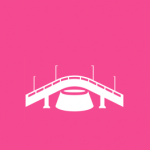

Metro Balbuena is the main station for the giant Jardín Balbuena neighborhood in the city’s east.
The colonia is most famous for the extensive work of architects, Mario Pani and Agustín Landa Verdugo from the 1960s. The neighborhood today represents much of the housing progress made by Mexico City in the entire 20th century. Pani’s 1964 giant Unidad Kennedy (pictured) only replaced the work of another young architect, Juan Legarreta, from the 1930s. Remnants of Legarreta’s fascinating early functionalist experiments are still standing around the Parque Obrero closer to Metro Jamaica, all the way across the neighborhood.
Today’s Metro Balbuena is most commonly used by international visitors wanting to gawp at Pani’s almost un-imaginably enormous Unidad Kennedy. Take in the Mercado Unidad Kennedy while you’re at it. It’s a great place for lunch. The Balbuena station also serves much of the equally ginormous Moctezuma neighborhood to the north across the Zaragoza causeway. Moctezuma, course, has its own Metro station. Traveling between them, you should get a sense of that thirty-year period in the mid-20th century when housing was a priority along with the people who most needed it.
 unidad_de_orientacion@metro.cdmx.gob.mx
unidad_de_orientacion@metro.cdmx.gob.mx
 5627 4950 / 5627 4741
5627 4950 / 5627 4741
 https://www.metro.cdmx.gob.mx/
https://www.metro.cdmx.gob.mx/

Nearest at 0.64 kms.

Nearest at 0.68 kms.

Nearest at 0.76 kms.

Metro Observatorio is the end of the line in the city's west, but don't let that stop you.

At home in one of the city's strongest counter-cultural scenes, Metro Tacubaya is still rocking.

Monarch butterflies return every year to Juanacatlán in Jalisco.

Close to the park and in the middle of everything, you'll be surprised what a weekend looks like from here.

Not just the "other" Zona Rosa station, Sevilla serves a big swathe of Roma Norte and Juárez